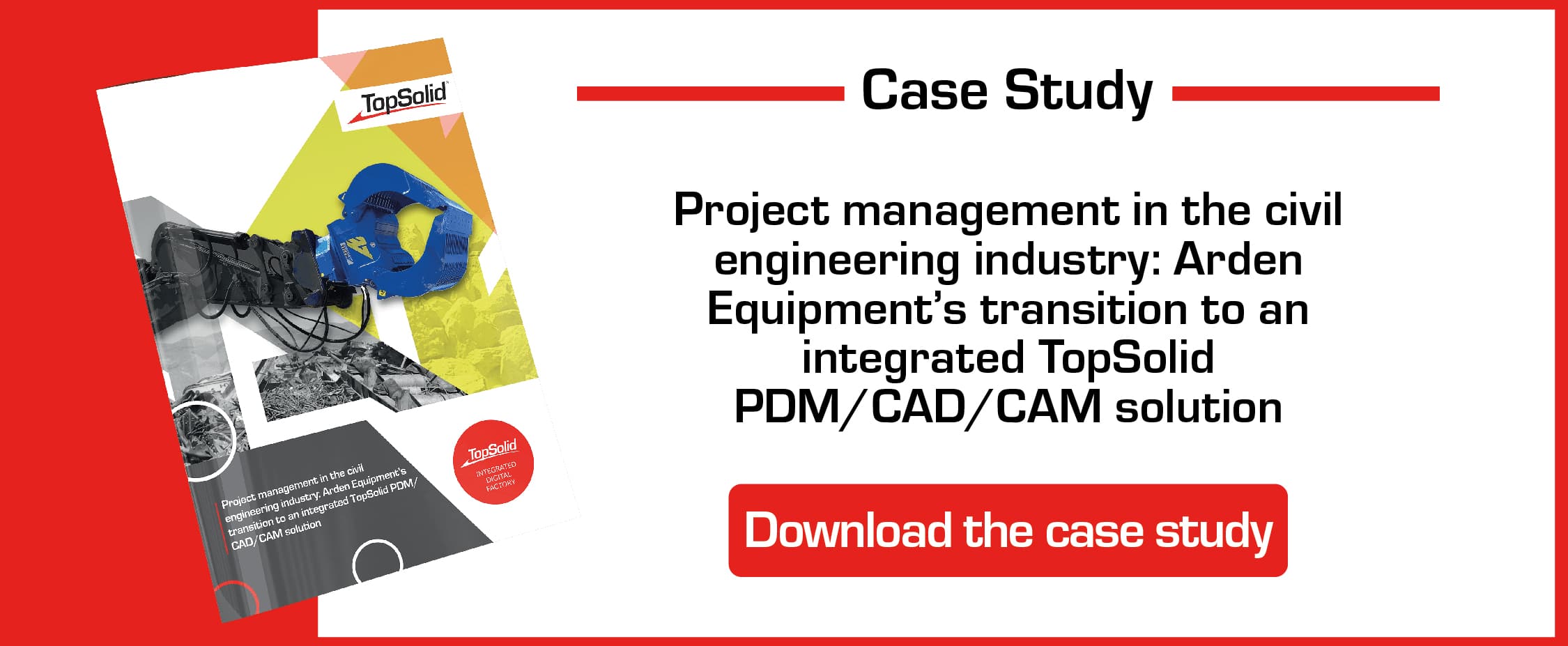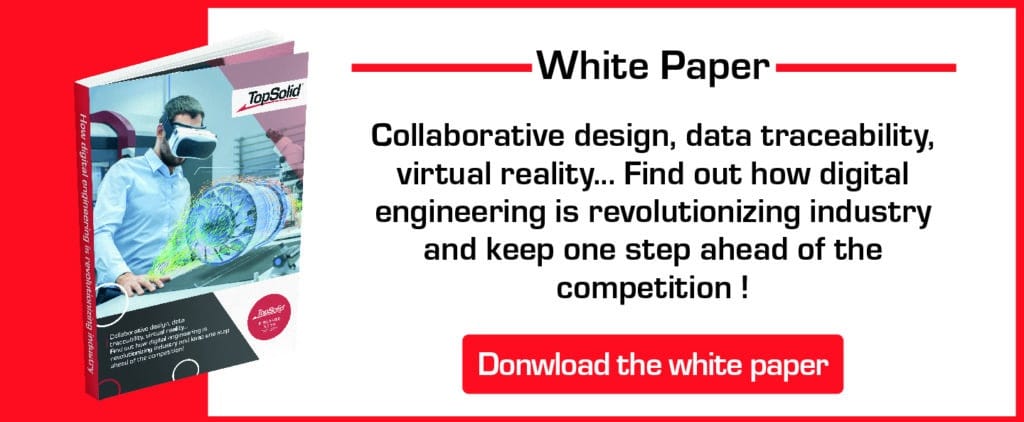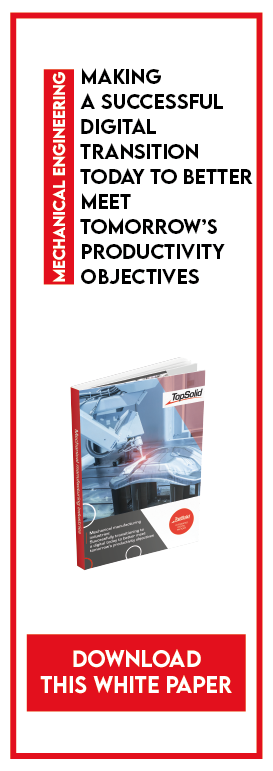![[CASE STUDY] Project management in the civil engineering industry: Arden Equipment’s transition to an integrated TopSolid PDM/CAD/CAM solution](https://blog.topsolid.com/wp-content/uploads/2023/02/AE-COUV--900x675.png)
[CASE STUDY] Project management in the civil engineering industry: Arden Equipment’s transition to an integrated TopSolid PDM/CAD/CAM solution
Specializing in the design, the manufacturing, and the distribution of tools for public works machinery, Arden Equipment leads the market with its full range of tools. Two essential factors drive the company’s activity: the constant monitoring of innovation in its sector by a very active Design Office and the desire to ensure continuous interaction between its teams and their customers.
In the 2010s, Arden Equipment — working at the time with the version 6 of TopSolid’Design — was approached by TOPSOLID SAS to act as a pilot company in the development of TopSolid 7. The previous version posed limitations to its activity, especially regarding the “old-fashioned” way of writing machining programs on machine tools and the lack of data centralization.
The transition to TopSolid 7 – whose PDM is fully integrated – has optimized project management by connecting the Design Office to the Methods and Machining Office. The ease-of-use of the solution and the relevance of its modules have resulted in a triple benefit:
- Increased productivity;
- Better control of product reliability;
- Improved project management.
According to Stéphane Maiani, Head of Research & Development, TopSolid’Pdm is “the ideal tool for a designer” and “a partner solution for innovation”.


![Collaborative design, data traceability, virtual reality… Learn how digital engineering is revolutionising the industry and stay one step ahead of your competitors! [WHITE PAPER]](https://blog.topsolid.com/wp-content/uploads/2023/10/livre-blanc-ingenierie-digitale.jpeg)

![Mechanical engineering: making a successful digital transition today to better meet tomorrow’s productivity objectives [WHITE PAPER]](https://blog.topsolid.com/wp-content/uploads/2022/07/LB-Industrie-Mecanique-Blog.jpeg)

